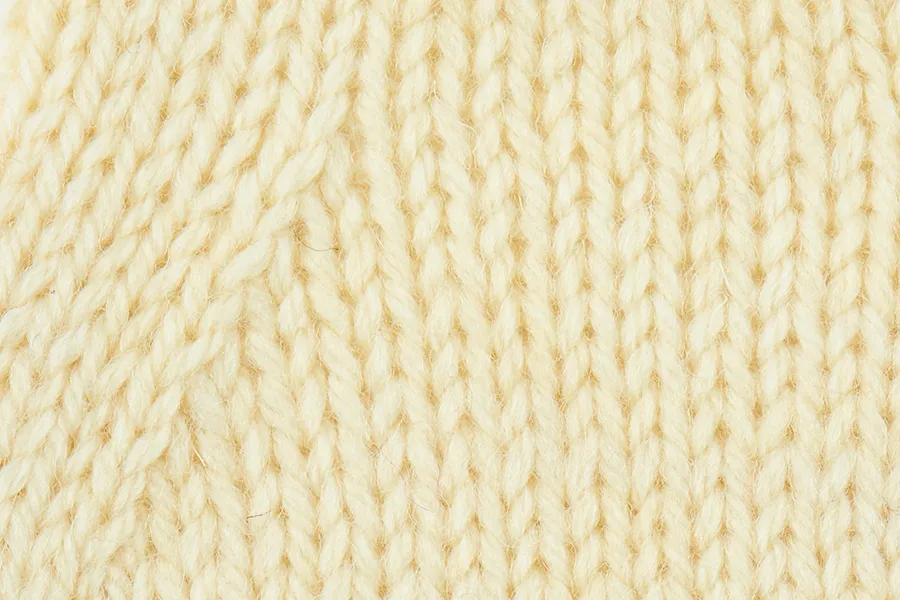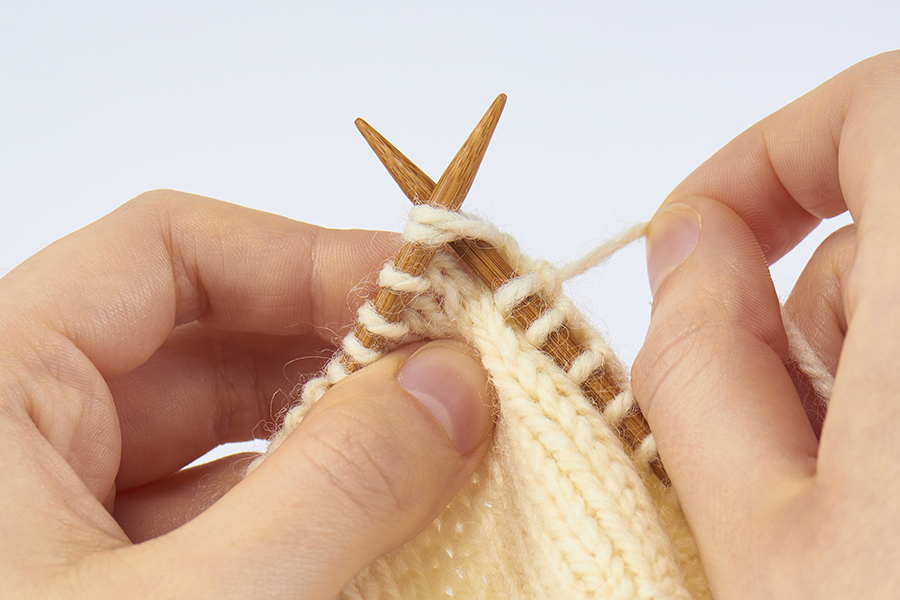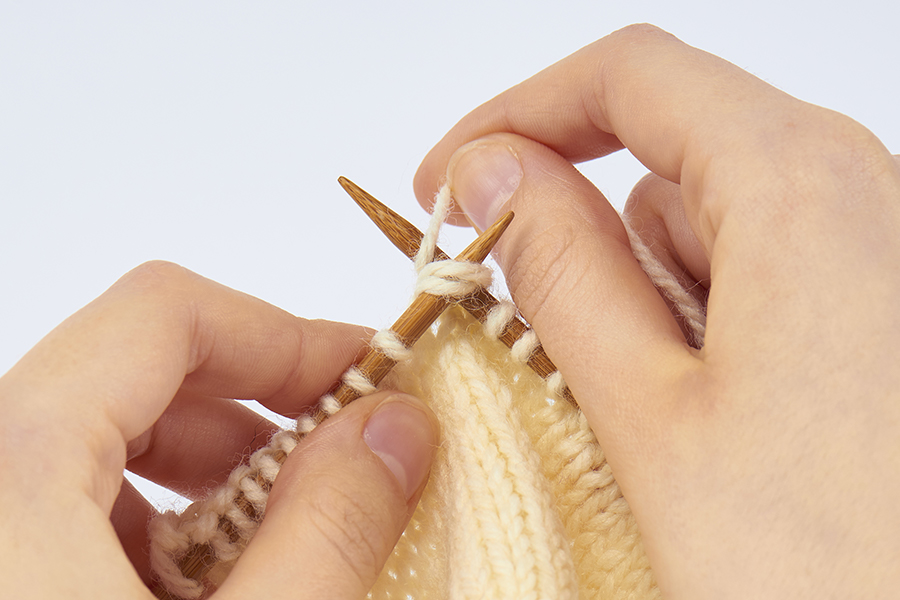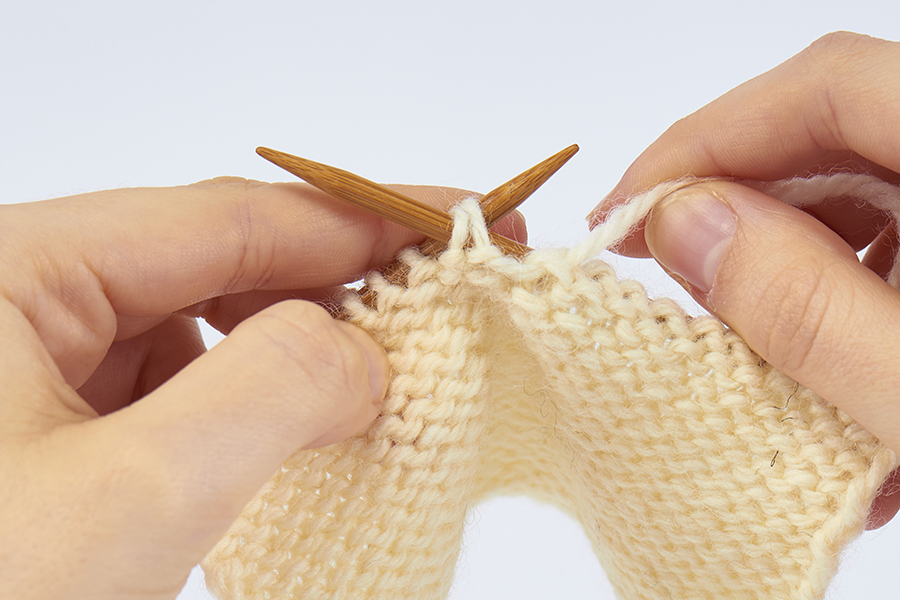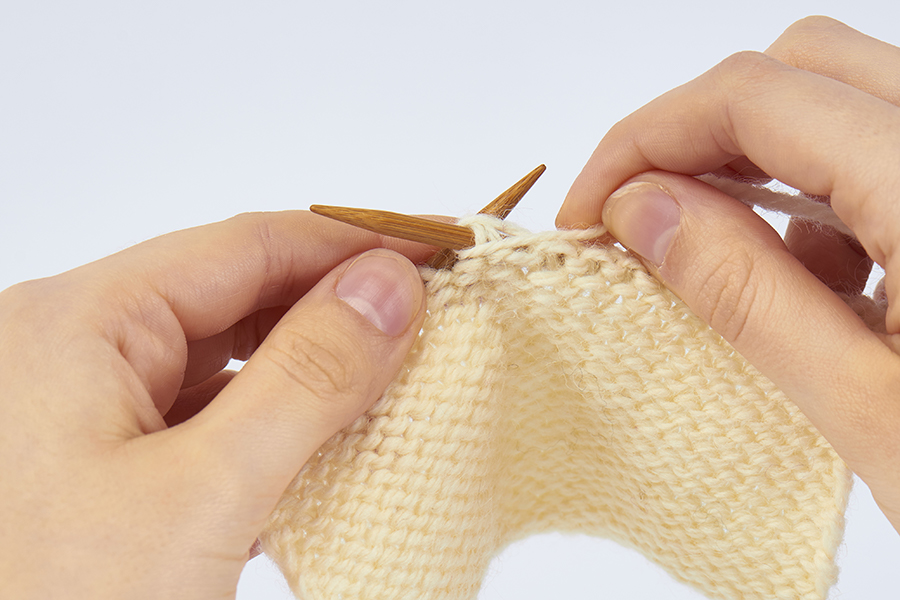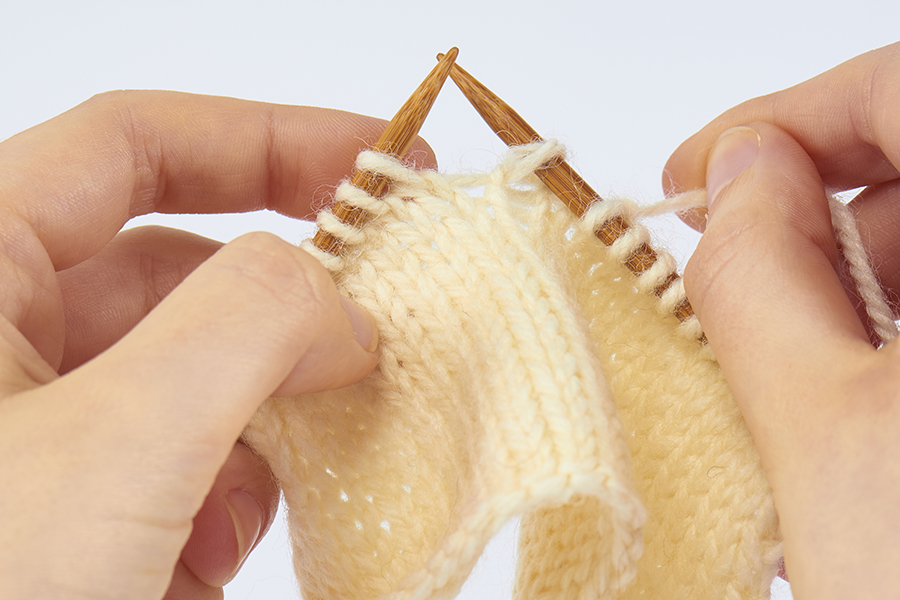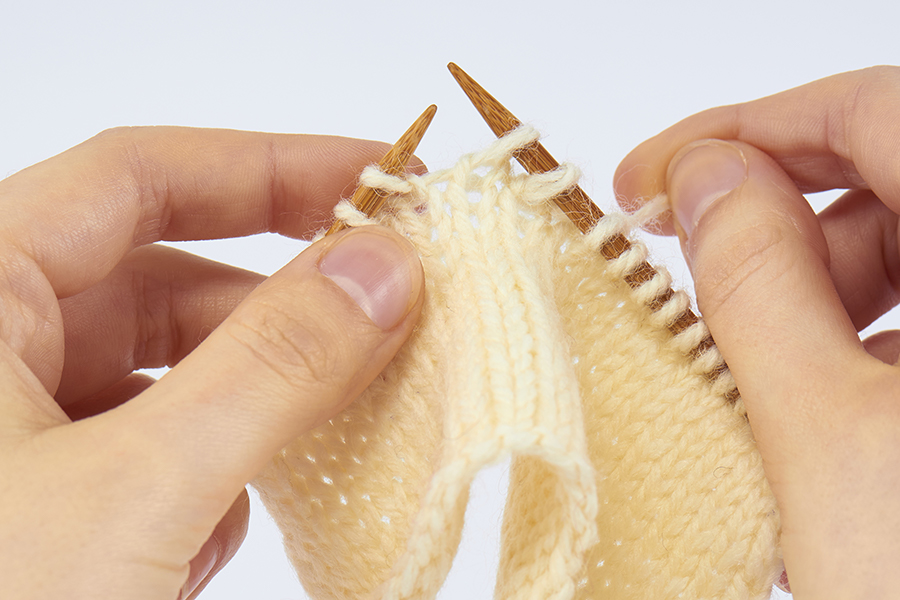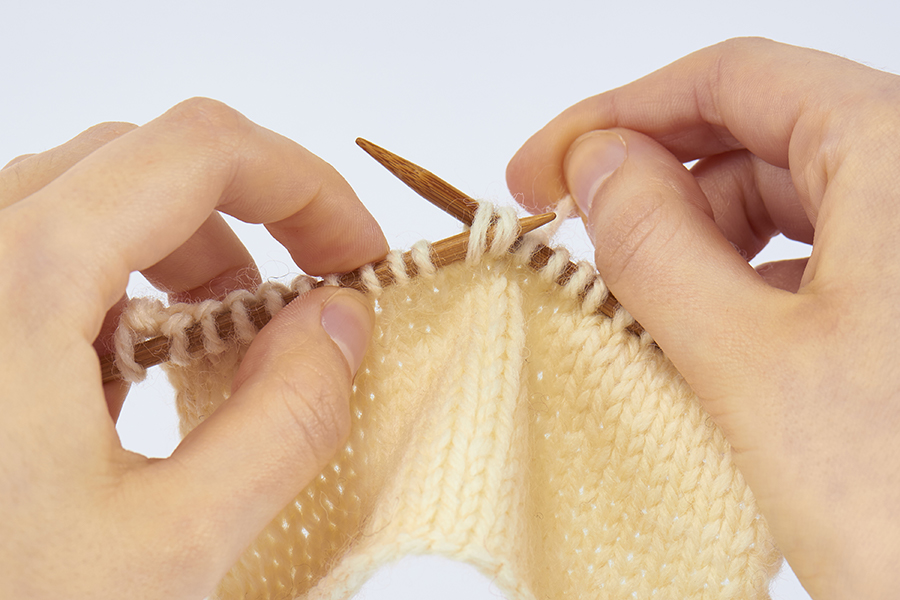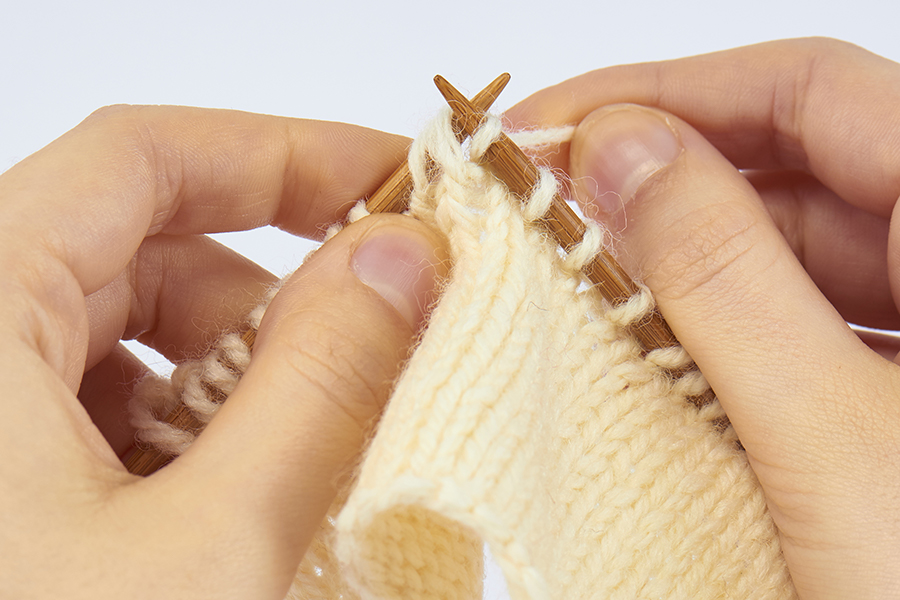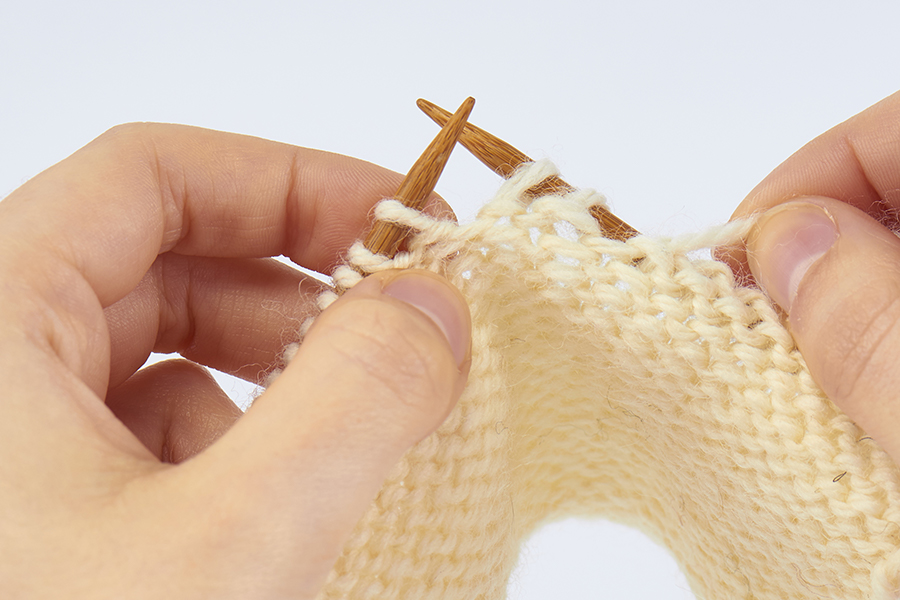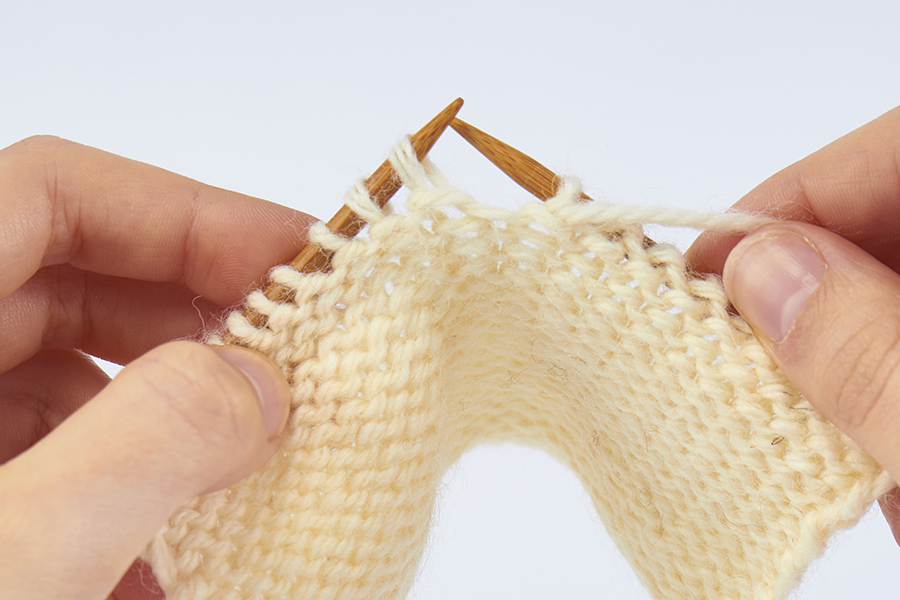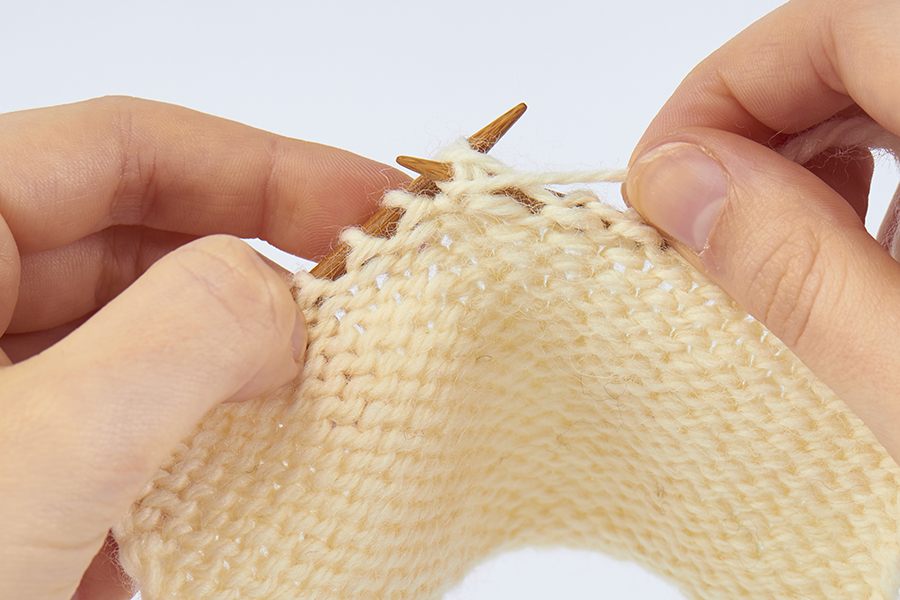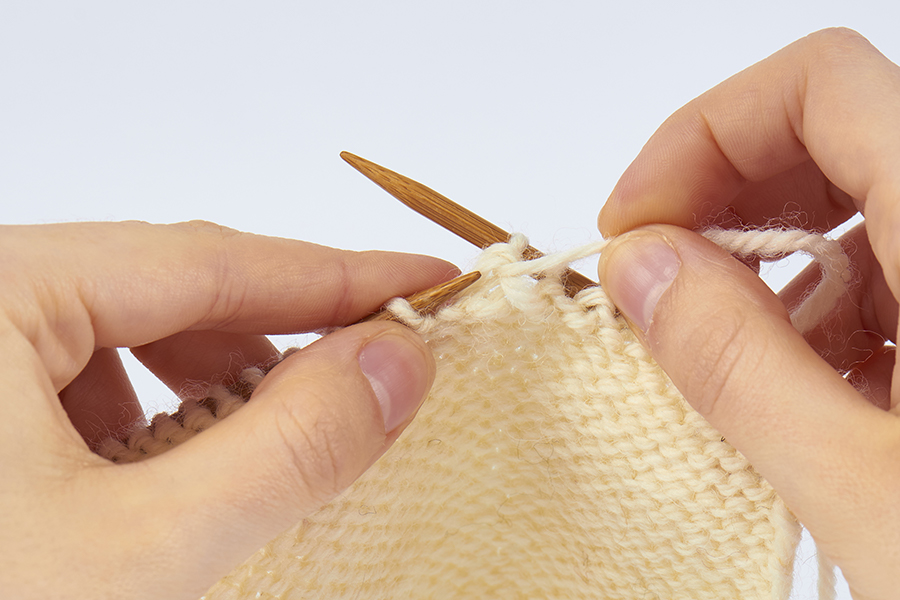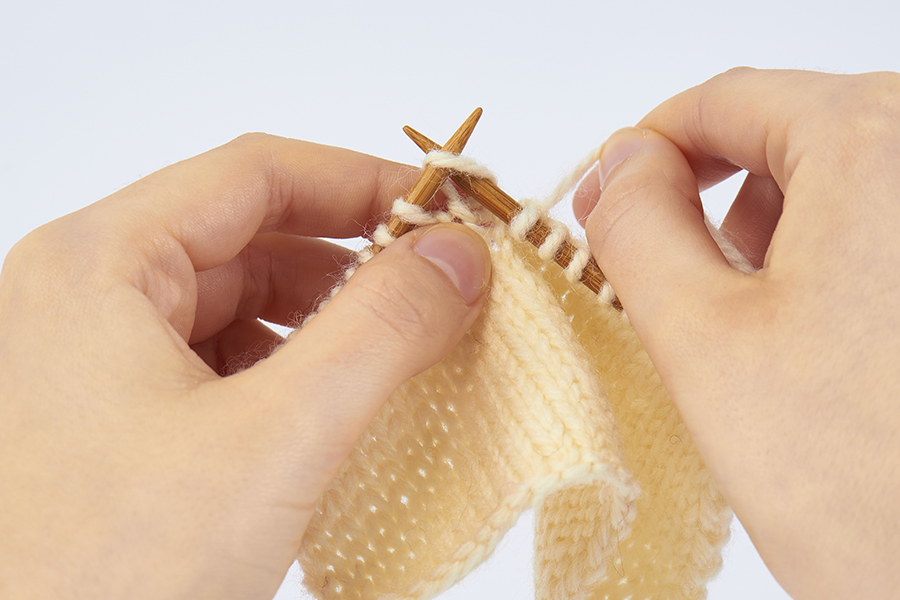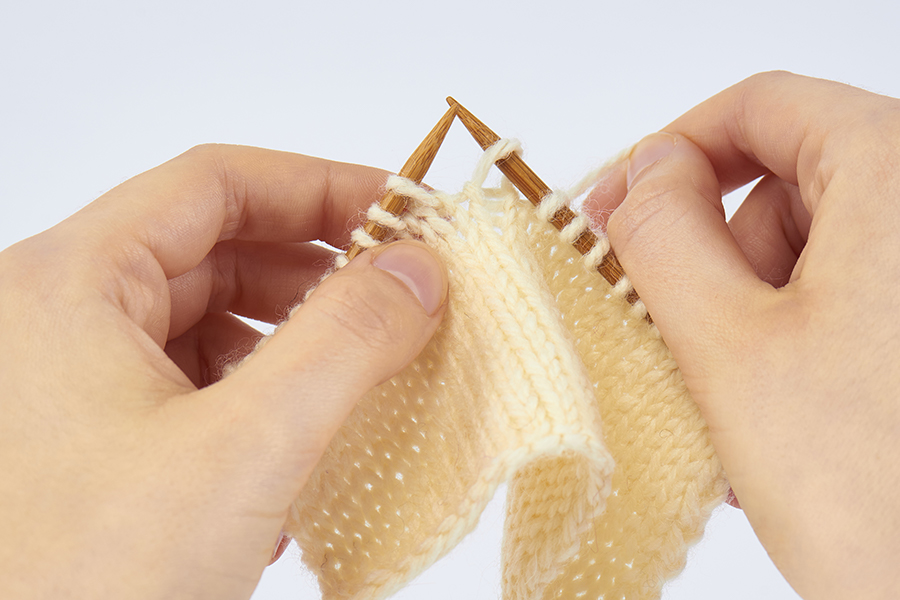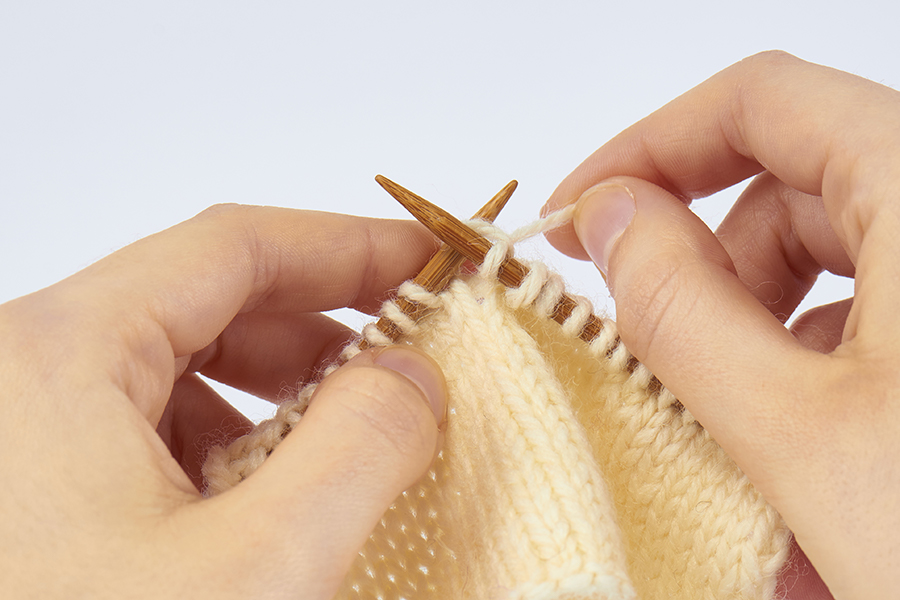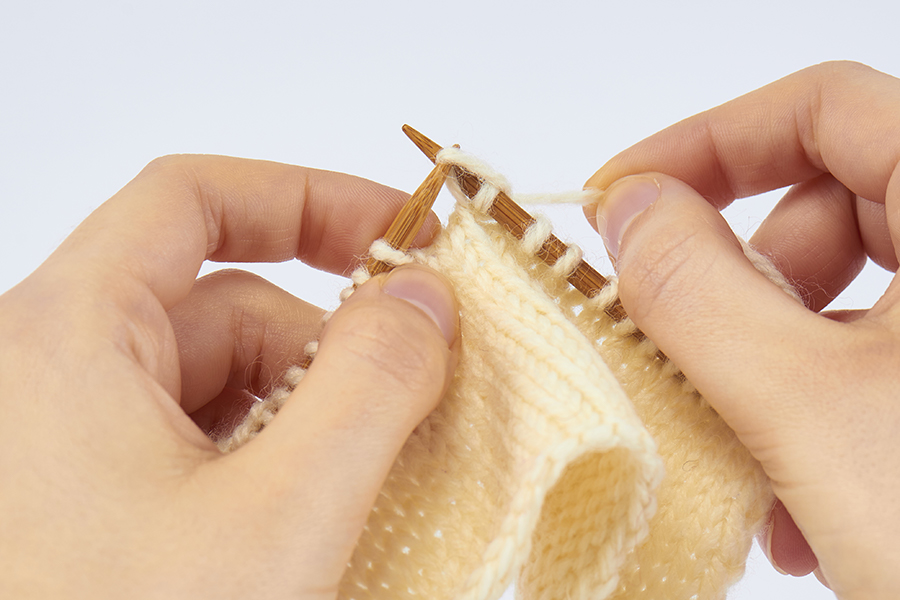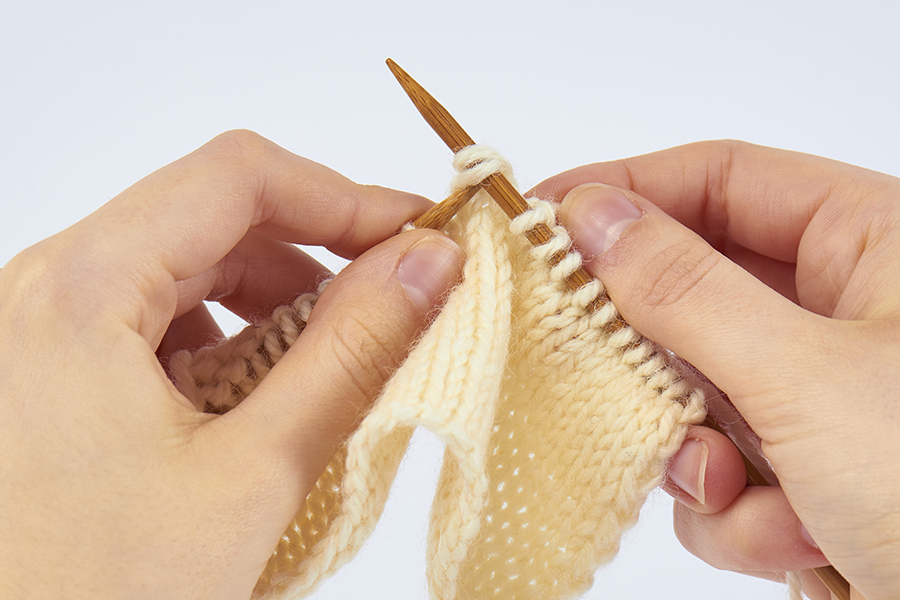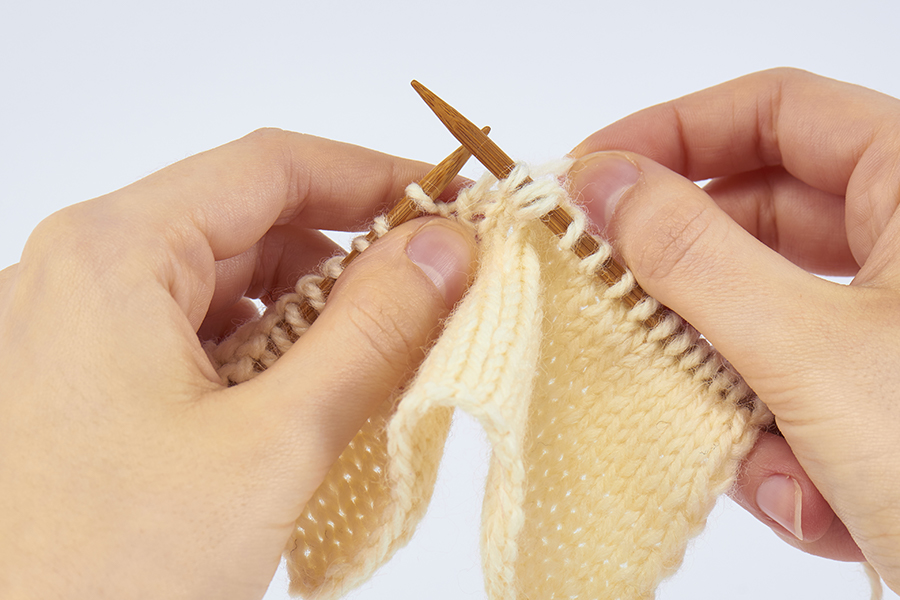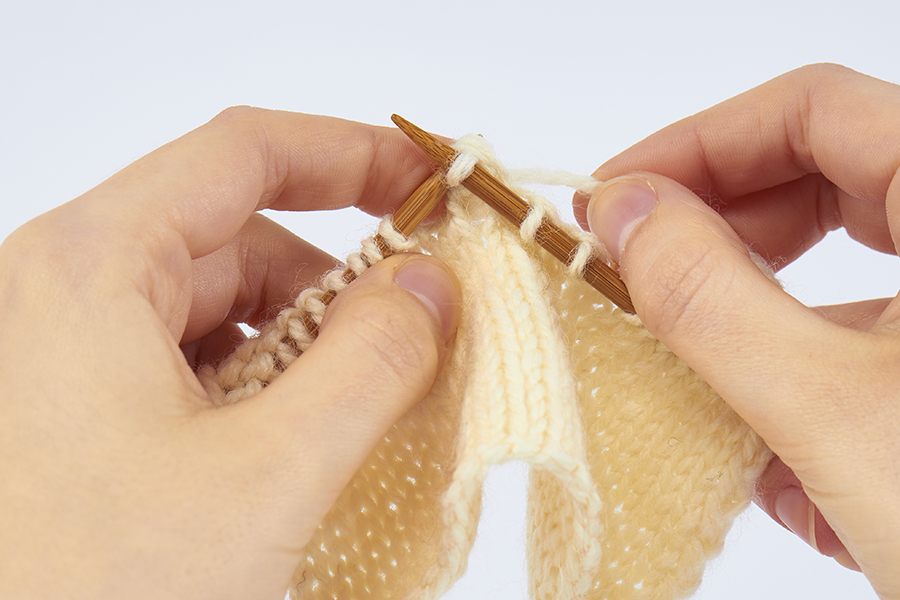If you’ve ventured beyond knitting a scarf or blanket since first picking up your needles, then you’ll most likely have encountered knitting decreases. Decreases reduce the total number of stitches in a row and narrow the shape of the knitting.
Each type of knitting decrease leans in a certain direction, affecting the column of stitches it sits within. When you decrease, you turn two (or more) old columns of stitches into one new column.
The k2tog and ssk knitting decreases are the two you'll use most often so they're the most important ones to master. In this guide on how to decrease in knitting, Jim Arnall-Culliford will also show you some variations and how to use them.
Learn how to decrease in knitting using the following stitches:
Right leaning decreases
- K2tog (knit two together)
- P2tog (purl two together) (done on wrong side of work)
Left leaning decreases
- Ssk (slip, slip, knit)
- Ssp (slip, slip, purl) (done on wrong side of work)
- Skpo (slip, knit, pass over)
Central double decrease
How to decrease in knitting
Before you start decreasing your stitches, you need to know which decrease method to choose. Below we cover some of the things to think about, including what type of pattern you're working and whether your decrease needs to lean left or right.
Left and right leaning decreases
Left and right leaning decreases are often used in pairs and referred to as ‘twins’. The way they lean is determined by which stitch passes over which. For example, a k2tog (knit two together) will lean to the right as the second stitch on the left-hand needle ends up sitting on top of the first stitch.
Stacked decreases, like those in raglan sweaters, create a visible line or pattern where the decreases sit on top of each other. K2tog’s twin, the ssk knitting decrease (slip, slip, knit), is the other one used in a raglan decrease, as it leans in the opposite direction, to the left – towards the k2tog decrease in this case.
Different patterns will call for different decreases, so it helps to have a library of them at the ready.
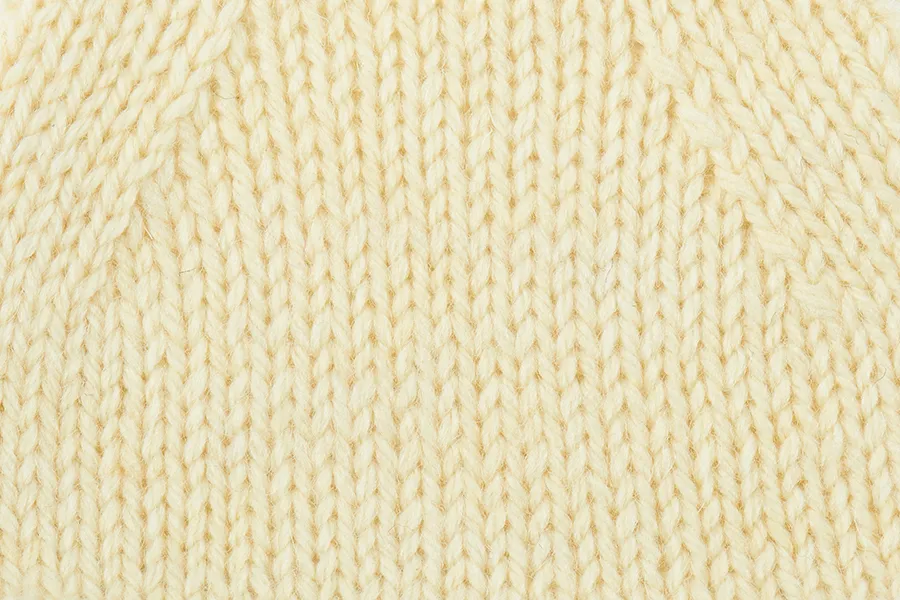
Lace knitting decreases
One of the key elements of lace fabric is the holes, commonly created by decreasing a stitch and replacing it with a yarn over.
Unlike in some patterns, the way in which you decrease in lace is important. Rather than using decreases for shaping you’re using them to create the lace texture. This means that which way the stitches lean is vital to how the pattern looks overall.
For every stitch decreased, a yarn over must replace it to keep the stitch count correct. Find out more about lace in our lace knitting tutorial.
How to decrease in knitting video
We've created a video showing the three most common knitting decreases. Watch our how to decrease in knitting video to explore the k2tog, ssk and skpo decreases.
If you'd prefer a written guide with photos, you'll find those below the video, too.
K2tog – knit two together (right leaning decrease)
This is the most common and simplest way of decreasing in knitting. It reduces the stitch count by one and the stitches lean to the right.
Once you’ve mastered k2tog, you can use the same idea to decrease more than one stitch at a time. However, the more stitches you decrease at once, the more pronounced the decrease will appear.
